INTRODUCING KALISTA DREAMPLAY
Kulaklık Modelleri ve fiyatları, en iyi kablosuz kulaklık, en iyi kulaklık
hificinema.co.uk
lotushifi.co.uk
oxfordaudio.co.uk
17/07/2023 07:30
Kulaklık Modelleri ve fiyatları, en iyi kablosuz kulaklık, en iyi kulaklık
A trend can broadly be defined as “a general direction in which something is developing or changing” but at what point has that trend been in place for such a long time that it then becomes something else ? The Status Quo or the ‘norm’ perhaps ? Right from Lotus Hifi’s inception some 11 years ago, I found myself leaning towards the construction of simpler systems with less boxes and clutter. Whether this was mostly on account my own volition or meeting the demands and needs of those who visited my shop I can’t be completely sure. It was probably a good mix of both, me developing an insight into just how capable super Integrated amplifiers from the likes of Vitus and Allnic could be and customers – many of whom owned Naim Audio systems, formerly the single most ubiquitous and popular brand in the UK – eager to abandon the double Fraim wall of endless black boxes and burndy cables.
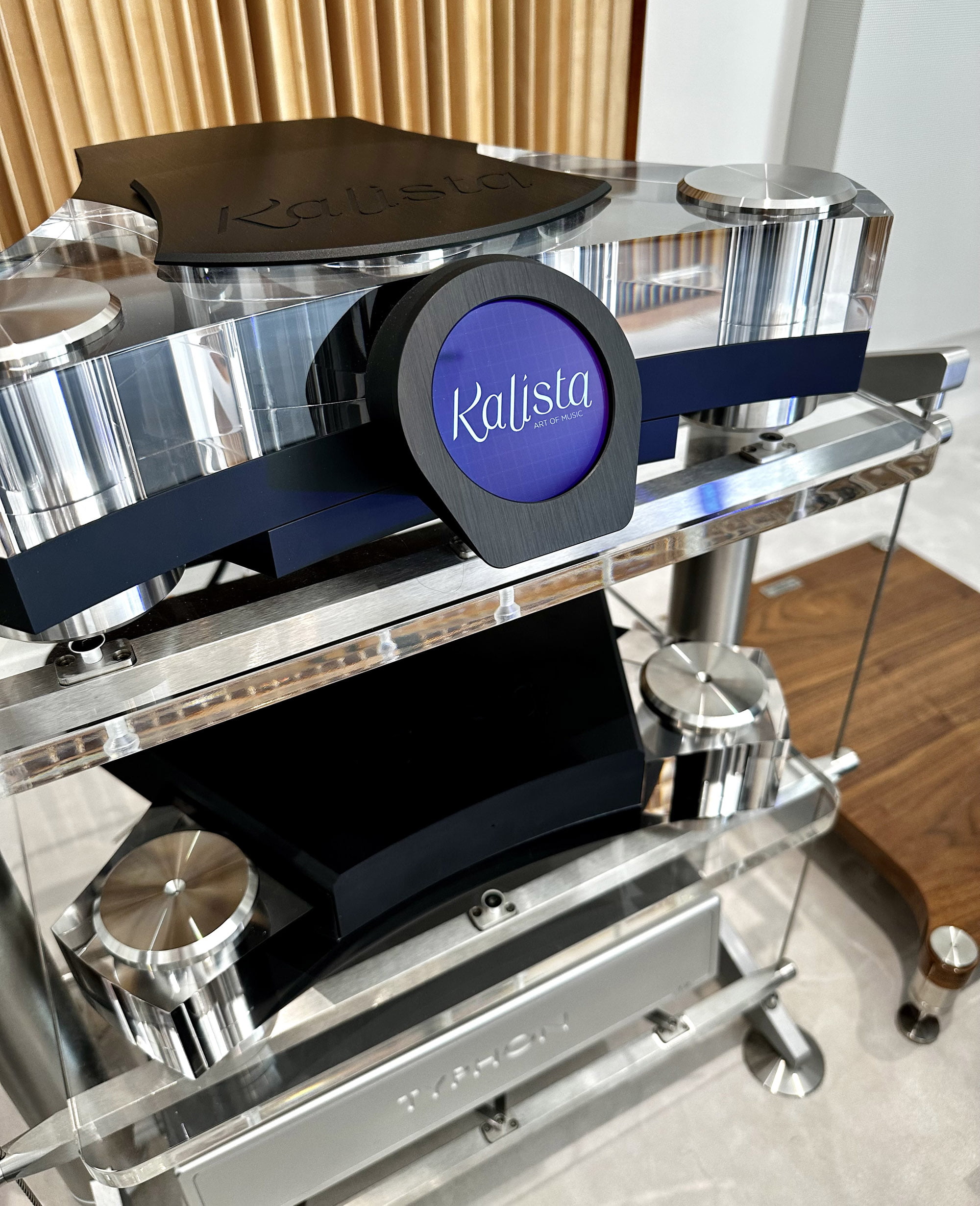
Dreamplay XC shown with separate Dreamplay Stream unit below.
Whatever the nature of this trend’s propulsion, it has continued in the UK and never lessened in its momentum. Ten years on, most customers still want the very best quality that a complex multi box monoblock system of yesteryear could provide in as small a form factor as possible. Manufacturers have thankfully echoed this trend with products like the Tidal Preos, a single box Dac/Preamp/Phono which arguably replaced three boxes and three sets of cables that would have cost well over double the money. Thrax Audio more recently mirrored the Integrated giants from Vitus Audio – the RI-101 and SIA-025 – with their Enyo and Ares offerings, cost effective all-in-one’s with integral DAC, Phono stage, Streamer, Bluetooth and Airplay. Many of the systems we are building today are designed around these exceptional units and one needs a an awfully large budget and an incredible set of speakers and source before its truly time to move to a pre power.
At the Munich Hifi show this year, we witnessed perhaps the ultimate expression of this trend so far. At the back of room E118, past the ‘vanilla’ Tidal Audio setup, sat two beautifully curvaceous loudspeakers with Bugatti logos on their fronts and situated between them, a bejewelled and carbon fibre encapsulated slimline control unit, perched atop a humble white MDF box. Although invites were restricted, everyone who witnessed this system, journalists, customers, manufacturers and dealers alike, were all genuinely aghast at what they heard. This single box system had as much dynamics, realism, immediacy and sheer engrossing musicality as any of the elaborate multi-million pound systems found elsewhere at the show and depending on your viewpoint, for many journalists, the Tidal Bugatti system was doing some things that put it firmly beyond all of those other rooms. A new bar, an ‘industry reset’ as some have coined it in print. And all of this from a single small 5 inch high unit, two floorstandars half or a third of the size of most of the shows other big hitters, and a neat space completely devoid of clutter.
Whilst other companies are splitting the chain into dual mono, adding power supplies onto power supplies, successively dividing the digital chain into router, switch, streamer, dac, clock, upsampler and PSU, not to mention housing all their gear on an ultra premium rack that would cost more than most people’s entire system, Tidal Audio believe that optimising pathways and overall complexity, putting everything into one chassis and concentrating the firepower of ones knowledge base onto Loudspeaker design is the key to advancing the frontier of high end audio. Judging from all the resultant awards it certainly looks like they are onto something.

Talking of trends, as a society have we also become more optically demanding over the last few decades, more materialistic and more influenced by the aesthetics and beauty of a purchase ? Whether its home décor, motor cars, watches, clothing or even formerly mundane kitchen appliances like touchscreen fridges or prosumer Espresso machines complete with ‘non burn’ steam wands, ‘bling’ for want of a better word has definitely been on the rise for some time now. Why this is so, the things that society now lacks which luxury is perhaps trying to counterbalance, would make for another great discussion one day but right here right now we should probably get back to Hifi. Two trends then and the Tidal for Bugatti system aces both of them beautifully. The Kalista Dreamplay from Metronome Technologies caters very snugly for both demands too, and it’s one of the key reasons it now lives here and we are now the sole UK retailer.
KALISTA
First a little history though. Kalista was spawned in 2003 as a statement CD player from French manufacturers Metronome Technologie. Today Metronome still produce some very fine digital equipment and if it wasn’t for our portfolio being so well appointed in this area with digital sources from the like of Tidal, Thrax, Brinkmann and Vitus then we would possibly look to retail their products as well, but they have kept the flagship Kalista offshoot brand separate ever since, to distinguish their top level produce as something extra special. Today there exists just a small suite of products which represent the absolute limit of their know how and happily combine beautiful aesthetics into the mix as well. Whilst they still make a pure CD player and a standalone DAC only, resident in the Lotus demo room are the two most relevant products the Dreamplay Stream, a streamer/dac unit and then the Dreamplay XC, a fully fledged 4-in-1 which can function as a CD + SACD player, a DAC with external inputs, a LAN connected streamer with DAC, and all combinations either with or without the advanced Leedh digital volume control enabled, obviating the need for a preamp if so desired.
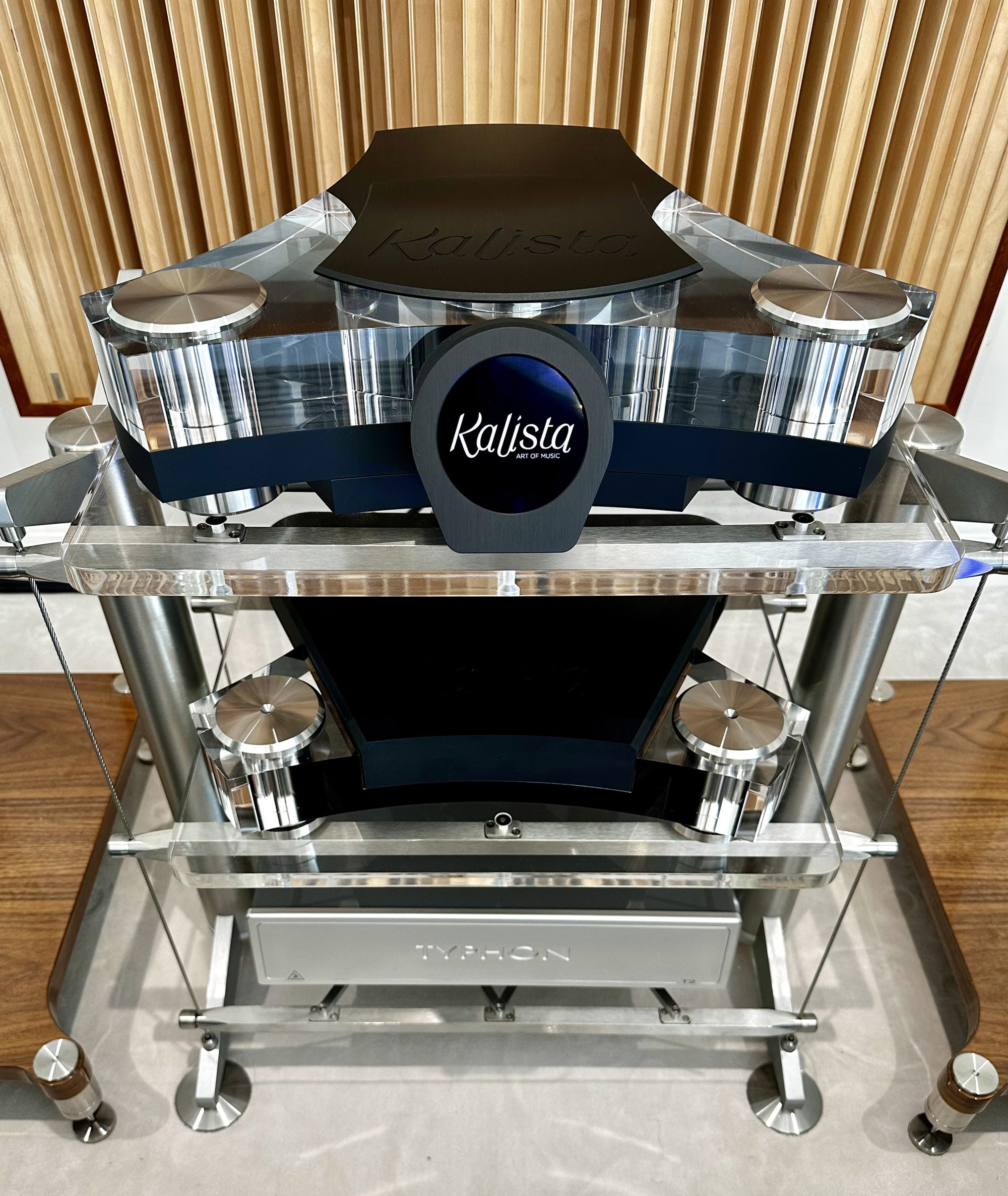
With our love of integrated amplifiers then, the Dreamplay will happily make a fully functional 2 box system. Simply plug the unit into the home network (we obviously advise audiophile grade switch and ethernet cable hidden away somewhere) and enjoy streamed music, digital sources such as Bluray and Sky, as well of course as the jewel in its crown, CD and SACD playback. Many years ago we were told that Vinyl was dead and then some time later CD was over and more recently the days of the computer files are apparently now starting to end with the advent of low noise home networks and first rate performance from internet streaming services. CD as we will see though, is healthily alive and kicking at this very top level and not only does it satisfy the demands of those customers who still enjoy selecting and handling physical media – a slower more considered process which arguably primes the listener for greater enjoyment – but it retains a certain sonic magic that the best ever transports always possessed, a beguiling yet subtle “analogue laser to bitstream” fingerprint to the performance which many of us loved so much and have now lost. If that kind of versatility isn’t quite enough then consider that for more sheer fidelity and performance, Dreamplay XC can have its volume control enabled and plugged into a power amp. Still two boxes but by employing a dedicated stereo power amp the world is your oyster in terms of out and out system transparency.
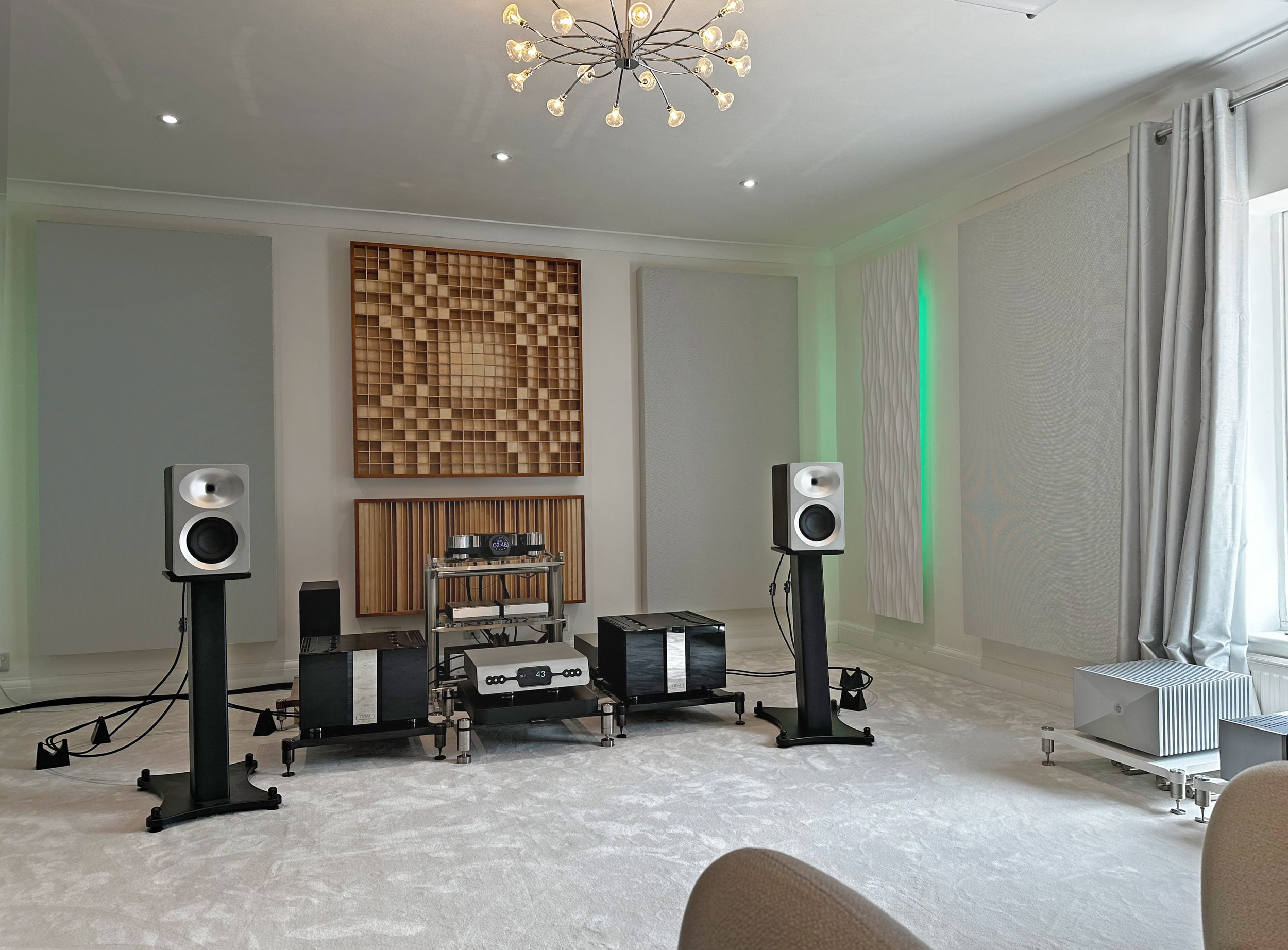
STREAMING
Streaming from the XC is as simple as it could be. I used the Mconnect app to test drive (although others are possible) and the unit was always readily visible and put out music instantaneously as it was selected in my current playlist. Whilst CD replay is undoubtedly the star of the show here, I would say that the quality on offer from Qobuz was still easily premium enough for critical deep listening sessions of the ultra high end variety. For actually exploring new music to later purchase on CD it would be more than adequate but I honestly think both playback methods are just as credible and any would be owner would probably be employing both. Deezer, Tidal, Spotify and vTuner are also readily available as one would expect and live radio broadcasts can sound particularly special.
The sonic differences between digital sources are narrower than between other parts of the hifi system. They are important of course and a great natural sounding DAC with superb expression and fine detail can make an ordinary system truly magical but when you contemplate the differences between say loudspeakers or speaker cables, the shifts in sound between one DAC and the next are far less impactful. Following on from this, it is also true that the landscape of top level DAC’s in the world of high end is composed of a group of units from different parts of the world which all operate broadly at a similar level. This isn’t like hypercars where the latest electric Rimac is so intergalactically faster than its next nearest competitor the Bugatti Chiron which in turn is indescribably faster than the top level Mclarens, Ferraris and Lamborghinis. All the world’s best DAC’s are more or less equals, all companies involved are all nibbling at the same frontier of technology, and anyone who claims that their machine is a large percentage more resolving or higher performing than another probably has vested interest or is looking for emotional reinforcement for the large amount of money he or she may just have spent. That being said, the best DAC’s are anything but equals when it comes to asking price (the delta can be £100,000 or more), optics and most importantly presentational style. There are a few recipe oddities which are exceptions but generally most of these units exist on a sonic line from the detailed, sharp, incisive at one end, to the smooth, liquid, dimensional at the other end of the spectrum. You pays your money, you takes your choice.
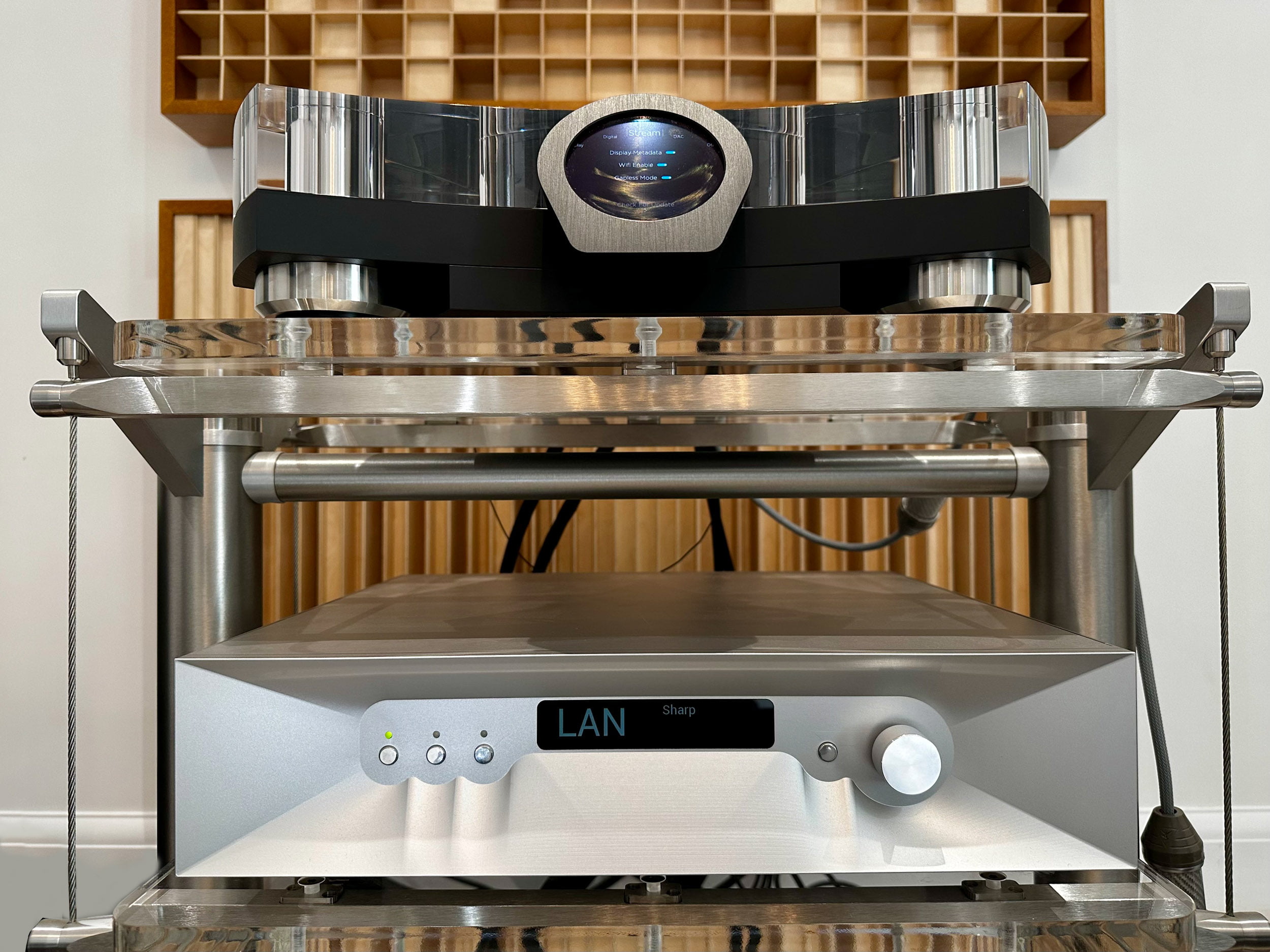
So the first belief to impart to you is that the Kalista Dreamplay DAC here is most definitely in that same small group of the world’s best digital sources. It is well within the small number of percentage performance points of any other DAC I have had the pleasure of encountering over the years, but then you would expect that of course because whilst we are some way off the pricing of a triple stack Vivaldi and a huge chunk adrift from the MSB select or that current high end darling the Wadax Reference, £55,000 for the Dreamplay (or £63,000 with volume control) is still a huge chunk of money. Welcome to the premier league then, with this level of ability in the engine bay you are almost certainly guaranteed a very special final system.
So it doesn’t take very long therefore to discover with certainty that the XC is comparable to any of my other flagship DACS, the Thrax Maximinus, Vitus MP-D201 Masterpiece or the Tidal Camira. With this machine you will be enjoying the highest levels of detail and musical insight. The dynamic ability of the Dreamplay will never be found wanting, nor will its ability to impart spatial information, harmonic detail, soundstaging and overall noiseless clarity, all the things that make a source sound real and alive right in front of you. With the same powerful infrastructure of network cleaning equipment in place (£5000 Melco S100 switch and £3000 Shunyata Omega ethernet cable) one of the first comparisons I made was to switch out to the Thrax Maximinus DAC and its inbuilt streamer controlled by the same Mconnect app. This is a £28,500 flagship ladder DAC which has impressed and wooed quite a number customers in the year or so we have been representing the Bulgarian brand so a fair bit cheaper than the XC but then without the complexities of a state of the art transport. The Thrax is a very interesting first litmus test because the AB immediately underscores the overall Dreamplay fingerprint. The Thrax immediately sounds slightly more linear, a touch more even handed and calmer. Detail levels and tonality are broadly similar but the Dreamplay is shown to have a bolder, more pressurised presentation with just the right shade of attractive bloom in the mids and low end. Is the Dreamplay slightly rounder and more organic ? It certainly was on my preferred filter setting versus the Thrax’s “sharp” setting but both players can be altered in this respect to change their leading edge characteristics so the comparison is less meaningful. The differences are overall fairly small as well as they generally are with digital, smaller sonic differences it has to be said than the differences produced by any given systems speaker cables, mains cables or support techniques.


Switching back to the Dreamplay after the Thrax comparison centres your analysis somewhat and it’s even easier to write about the type of sound you are hearing. The Dreamplay possesses a few extra degrees of pressure and pronunciation and a well judged bias toward the organic, the analogue and the beauty of the note. Referring back to one of our early paragraphs about top level DACs we could say that in style it is a whole football pitch apart from the strongly leading edged and more analytical sound of its Vivaldi and MSB peers and depending on your taste this may be a good thing. Certainly as far as Lotus customers are concerned, it means it’s a very welcome fit into the sort of natural non-Hifi sound we are known for. The Dreamplay XC from the first note is unashamedly French and its heart is devoted to songs, melodies, emotion and texture, the enveloping fullness of the complete song rather than a more self-conscious performance highlighting resolution levels and impressive audio cues like soundstage, air and space. That’s not to say that the Dreamplay is in any way soft or soggy or lacking in drive, propulsion and dynamics. In the spectrum of romantic to hyper detailed is still lives approximately in the middle. One notch less neutral and linear than the Thrax perhaps and even a smidge to the left of the Vitus Masterpiece, but still some way off the likes of the Lampizators which seem to trade harmonic saturation for resolution and accuracy, or the decidedly “fat” Rega Isis valve which was a lovely sounding thing in its day but outrageously “fat” and bloomy.
Just going back to the point about dynamics, I have to take disagreement with one of the UK reviews of this unit which found it slightly lacking in propulsion and pace. Perhaps that particular reviewer is more used to something a lot more aggressive and forward from say perhaps the Naim stable, or perhaps the test system did not enjoy the requisite low noise floor and bandwidth that is needed to properly scrutinise a machine of this calibre ? We also know that the recorded hours on the demo unit were notably low after said review so perhaps the Elektra power supply never even actually got into its stride ? Running through many of my Qobuz faves – Simi by Marc Romboy being a firm electronic favourite of Tidal Audio MD Jon Janczak – I found the XC to have as much drive, pace and basic dynamic wallop as I would want or expect from any state of the art digital setup. Less than good cabling or mains will of course add noise, lots of it, and the resultant system may not have the requisite bandwidth to allow a high end player of this calibre to sound as fully hard hitting as it should. Like all the best components it does not do fake ‘added in’ dynamics – think of the little loudness button on your 1980’s Blaupunkt car stereo – that is the domain of cheap DACs which are rightly designed to be used in modest systems which lack true transparency and a low noise floor.
THOSE FILTERS
Let’s talk about Dreamplay filters. The edge of notes, the EQ balance and the imaging character can also be tweaked by no less than 7 different on board digital filters. Now these generally divide opinion but perhaps resistance to them is more about people not being confident enough to listen with their own ears and decide themselves which they like best. I personally find them useful especially if you can be bothered to pair them with different file formats and sampling rates. The Thrax DAX has a simpler array of filters and for that unit I generally like to keep it in “Sharp” but on the Dreamplay XC whilst “Corrective Minimum Phase Fast” and “Apodising fast” brought some pleasing things to the table, I generally preferred “Linear Phase Slow” as a go to setting. Whilst “Linear Phase Fast” was a touch leaner, more incisive and a tad less organic with a strong presence region, “Linear Phase Slow” I felt was just more in keeping with the core DNA of the player and indeed the brand. A more enveloping sound, a touch more rounded, just a smidge more bass emphasis, this filter made the DAC really really sing with all my typical music selections. The style is ever so slightly Triode like with great ambience and presence and in the context of my most employed test system – a very neutral Thrax Ares integrated amplifier, the quite wonderful Thrax Sirens standmounts and Avalon PM2.2 loudspeakers with Hemingway cables – the result was simply a gorgeous thing to drown yourself in. With different music, different ears and of course a different system (especially given the variation in cables and mains) you could well end up using some of the other filters more; once you get your brain and ears around them, they really are very useful to have in my opinion. Incidentally the “Brick Wall” and both “minimum” filters I cared for less. They brought an unwelcome unnaturalness to proceedings.
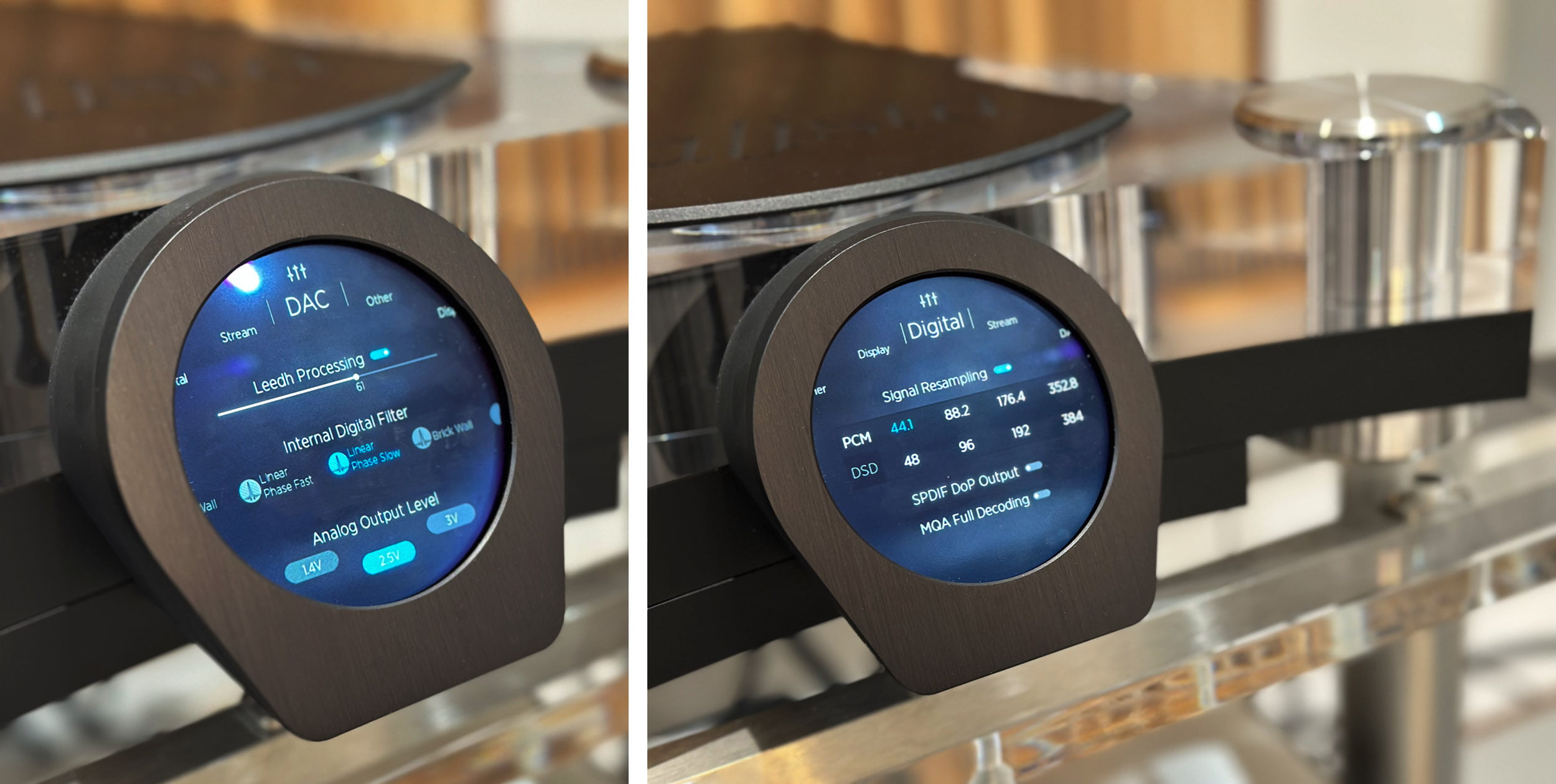
SPINNING
So what we have here is a superb top of the line streamer and DAC that looks stunning as a living room centre piece and is a doddle to connect up and use. Like all of our picks here, it will never fatigue and is never inclined to dissect the music into something which it was never supposed to me. It has the right amount of bloom, warmth and inbuilt flair and verve to immediately mark it out as a very very special sound but then its character is so well judged that it could never really be described as anything other than linear and neutral. The best is yet to come though because whilst Qobuz through the streamer was on a par with some of my other flagship DAC’s, inserting my favourite CD’s and spinning the polycarbonate took everything up to a whole new level of deliciousness. At first I simply played disc after disc, working my way through many of my favourite floaty jazz offerings from ECM, Mark Hollis’s solo album, some Laura Veirs and plenty of good old Bebop from Dexter Gordon and Monk. Damien Rice, Fink, Roger Waters, Stevie Ray and Bireli Lagrene, everything just sounded so enjoyable replete with so much of that crucial element I look for when system building … life and presence. Moving on to some more dense and dynamically saturated material – Mozart, Gary Numan, Muse – the Dreamplay CD rose to the challenge with superb weight and heft and reserves of transparency and tonal beauty even when the music peaked in both volume and congestion.
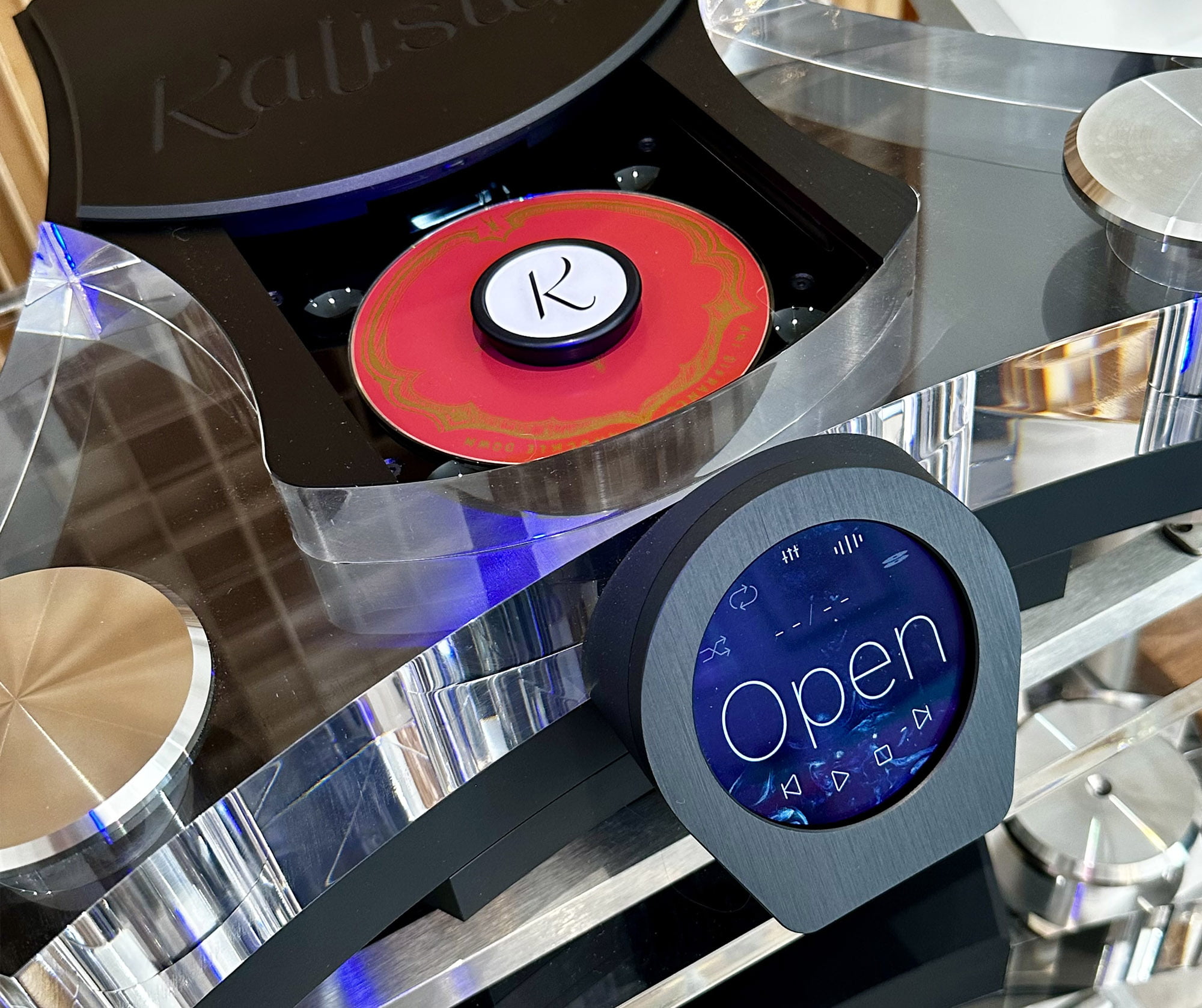
At the flick of the remote it was very easy to then AB the same tracks on Qobuz and CD so this I did a few times with a number of CD’s. On King Creosote’s “Your Young Voice” the CD sounded a shade quieter, more considered and polished. The music felt like it was emanating more from nothingness and the guitars sounded more harmonically accurate with finer detail and expression at their edges, so more treble delineation and slightly more body and richness elsewhere. More poise, more presence around vocals and more depth and space in the lower registers. The Qobuz version sounded more diffuse positionally and not quite as focused. The guitars were a touch hifi sounding by comparison with a slight truncation of the very finest treble details resulting in them sounding a tad brighter and more metallic. We are now perhaps describing the smallest of audible differences though. Admittedly these are the very final million pound ushabti figurines discovered long after you have located the main mummy with sarcophagus. Put another way, almost any customer entering into the Lotus dem room and hearing the Dreamplay XC in the test system as I had it, would surely smile and say “wow, that’s a fabulous sound” … whether it was playing a CD or streaming from Qobuz. One must also remember that some of this noise penalty is network related and further network enhancements (the ADOT fibre kit would probably be the next one to add in my test system) would take the Streamer/DAC performance further along, not to mention playing WAV files from a network attached server or dedicated audiophile device like a Melco or Innuos.
THE OPTIONAL VOLUME CONTROL
The last investigation for me was to enable the inbuilt Leedh Processing volume control and pipe the XC straight into a power amplifier. I also enabled it on and off straight into the Thrax integrated just to get a handle on exactly how invisible it was as a digital volume control. A quick google will tell you far more than I could here but Leedh is a small French company and their very clever and complex volume control algorithm, which aims to minimize quantisation errors by representing volume values by as few as bits as possible, is now employed by many of the well known heavyweight digital manufacturers. It’s fast become a bit of an industry standard but just how good is it in the context of the sort of equipment and systems we create here ?
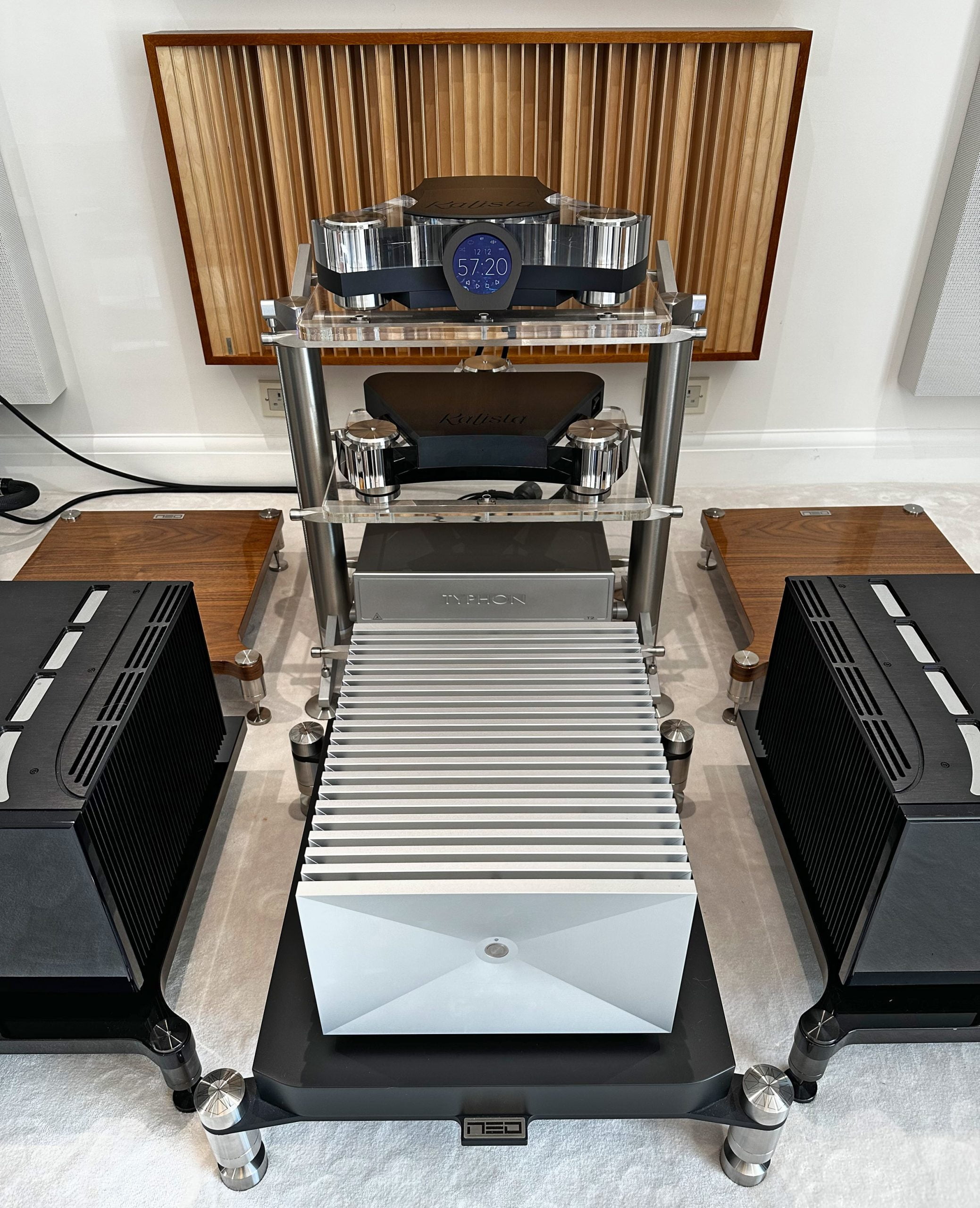
Well in truth I had great success in building systems with power amps and the volume control in particular with both the Tidal Ferios mono amps and the small little lightweight Tidal Intra. They all sounded superb but I was aware that something slight had been lost. How much though ? During my on and off test into an integrated (with the Leedh volume set to maximum) I suppose the degradation can be likened to my findings of Qobuz vs CD. Enabling the Leedh gave an ever so slightly flatter narrower sound with a touch less body and space. The sound was always bigger and bolder without. The Leedh however must be understood in context. Its usage not only reduces the box count by a factor of one but it also saves on the cost of a decent linestage, upwards of £10,000 or so at this sort of level. It should also be pointed out that the small sonic penalty suffered with the inclusion of the Leedh volume algorithm is not only a lot smaller than many other digital volume controls but it could easily be reversed by all manner of fairly modest system upgrades elsewhere. Stillpointing your speakers, a £3000 mains cable over a £1000 example, a better ethernet cable, the upgrade delta of such products would probably be equal or larger in magnitude to the small penalty incurred by using the Leedh so given the space saving advantages and the distillation of everything onto one simple remote, it is very clearly something well worth considering for some customers.
IN CONCLUSION
In many ways the Dreamplay XC is a very unique and versatile product with many differing facets. I or anyone else can’t really offer you any other unit like it. Only the Vitus Masterpiece DAC with Masterpiece Transport could offer related functionality but it would be 2 boxes and lack a volume control as well as in built streaming. Dreamplay is also a thing of visual flair and beauty, a centrepiece to proudly show off, a talking point, something exotic which sparks pride of ownership and enjoyment long before its even powered on. Vinyl aside, it will fulfil all the source demands of the modern age, from CD to SACD, files, streaming services and internet radio. Yes, it does come with a fairly extensive Electra power supply which is clearly a critical part of its amazing performance, but this can be ordered in tower and landscape form factor and is only ever powered on so can be hidden out of sight or placed inside a cupboard or sideboard with a modicum of ventilation. During my tests I was also particularly fond of the XC + Tidal Intra combination. The Intra is class D, under 12kg and very slimline for such a ultra high end power amplifier. Developed originally for the Bugatti project it has the kind of transparency that you will only find in stereo powers starting at £50,000 and upwards and it’s liquid and deeply harmonic sound mated especially well with the Kalista sound. It’s another inconspicuous unit which could easily be hidden away giving the impression that the bejewelled Kalista is the entire system. The class AB Thrax Teres also proved a great companion as a pure power amp and with the Leedh volume control switched off, superb results were had with all my integrateds, Vitus RI-101mk2, SIA-025 and Thrax Ares and vacuum tubed Enyo. The real USP here though is that Dreamplay in X or XC configuration is probably the finest CD+SACD player in existence. Nothing else like it is produced by anyone and it gives little if anything away to the world’s best front ends playing digital files or indeed streamed music. If you want the best and you want to spin CD’s then right now this has to be the holy grail. I have to say that I absolutely love listening to it. It has an ease of operation, high functionality and classy optics that make it extremely convenient to use when demoing amplifiers and speakers so it will probably remain in situ here for some time to come and get used a great deal.
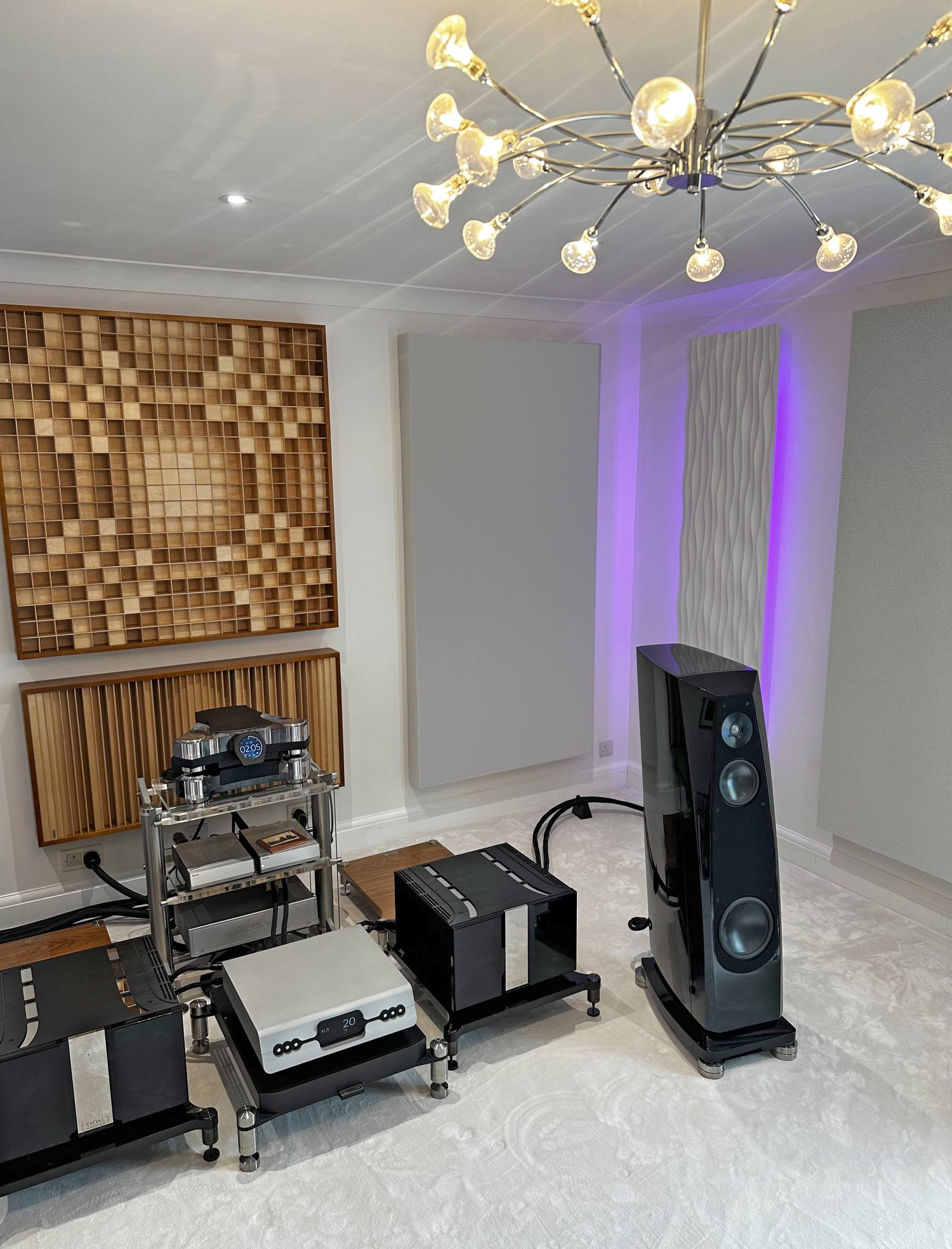
Further Reading
The post INTRODUCING KALISTA DREAMPLAY first appeared on lotushifi.